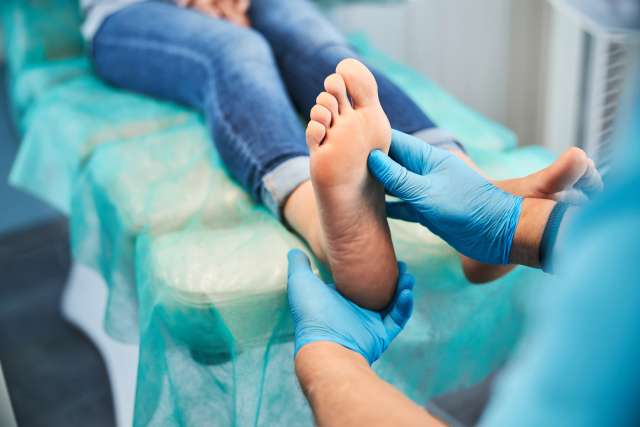Dear Doctors: I have walked barefoot all my life without any problems. But now, the ball of my right foot has started to hurt when I do. I'm 55, a woman and a runner. I read that the fat pads on your feet get thinner with age. Could that be what’s happening here? Can it be fixed?
Dear Reader: The skeletal structure of the human foot is remarkably complex. It’s a matrix of 26 bones that -- linked together by joints, tendons, ligaments and muscles -- form the heel, arch and ball of the foot. The result is a platform agile enough for a wide range of movement, yet stable enough to support the full weight of the body.
That’s where fat pads come in. Located beneath the heel and the ball of the foot, the two points of greatest pressure, fat pads are thick layers of a mingling of connective and adipose tissue. They help to evenly distribute the forces bearing down from above and shield the delicate structures of the foot from the harder surfaces below.
Over time, the fat pads on the bottoms of the feet can shrink, grow thinner or lose elasticity. This is referred to as fat pad atrophy. It can occur due to wear and tear, injury, weight gain, genetics and the natural effects of aging. As a runner, you put additional stress on your feet, which can compress the fat pads. So can wearing high heels or ill-fitting shoes. Fat pad atrophy can also be a side effect of disease, including arthritis, peripheral neuropathy and diabetes. Whatever the cause of the condition, the result is increased sensitivity or pain in the ball of the foot or the heel, and sometimes in both areas. Fat pad atrophy can range from merely uncomfortable to painful enough to interfere with the individual’s ability to carry out regular activities.
Diagnosis includes a physical and visual exam, along with a medical history. The latter is to identify and address any metabolic issue that may be contributing to the condition. In some cases, imaging tests are used to pinpoint the degree of fat pad loss.
Treatment typically begins with taking a break from any high-impact activities. Switching to footwear that protects the affected areas, and also has adequate arch support, is also important. This can include the use of cushioned socks, padded insoles, heel cups or custom-molded shoes. Physical therapy can help strengthen the muscles of the ankle and foot, and, thus, improve weight distribution and stability and increase flexibility. Working with a physical therapist can also help identify and address any biomechanical issues that may be contributing to the problem.
More recently, treatments to rebuild the fat pad cushion are being explored. One approach is to replace lost adipose tissue via the process of fat grafting. Another option is the use of injectable dermal fillers. The goal of each of these is to replace the loss in volume that has occurred. Your doctor will be able to help you decide if either of these may be appropriate for your condition.
(Send your questions to askthedoctors@mednet.ucla.edu, or write: Ask the Doctors, c/o UCLA Health Sciences Media Relations, 10960 Wilshire Blvd., Suite 1955, Los Angeles, CA, 90024. Owing to the volume of mail, personal replies cannot be provided.)





